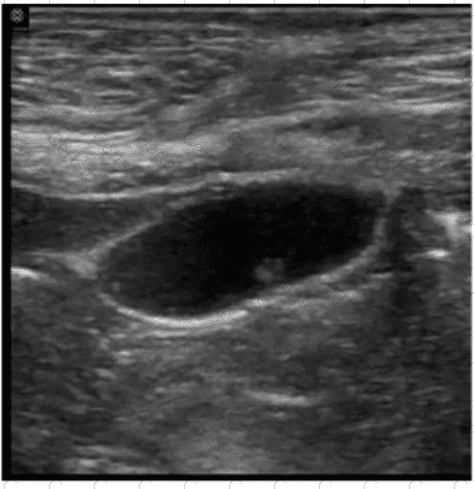The image demonstrates a gallbladder with a possible echogenic focus (likely a gallstone) and posterior acoustic shadowing. This is suggestive of cholelithiasis. To differentiate uncomplicated gallstones from acute cholecystitis, the most effective technique is to assess for a positive sonographic Murphy sign.
A positive sonographic Murphy sign refers to the presence of focal tenderness over the gallbladder when it is directly palpated with the ultrasound transducer. It is a strong indicator of acute cholecystitis when combined with other features such as gallbladder wall thickening, pericholecystic fluid, and gallstones.
Sonographic Murphy sign — key points:
Assessed during real-time scanning
Localized tenderness when pressure is applied over the gallbladder
Highly sensitive for acute cholecystitis (especially in the presence of stones)
Differentiation from other options:
A. Use compound imaging: Improves image quality by reducing artifacts but does not verify tenderness or confirm acute inflammation.
B. Change the patient’s position: Helpful to confirm mobility of gallstones, but not diagnostic of inflammation.
C. Ask patient to perform Valsalva: Used primarily in vascular studies (e.g., assessing for varicocele or venous reflux), not relevant here.
[References:, Rumack CM, Wilson SR, Charboneau JW, Levine D. Diagnostic Ultrasound. 5th Edition. Elsevier, 2018. Chapter: Gallbladder and Biliary System, pp. 148–152., AIUM Practice Parameter for the Performance of an Ultrasound Examination of the Abdomen and/or Retroperitoneum, 2020., Radiopaedia.org. Sonographic Murphy sign:https://radiopaedia.org/articles/sonographic-murphy-sign, , , ]

Submit